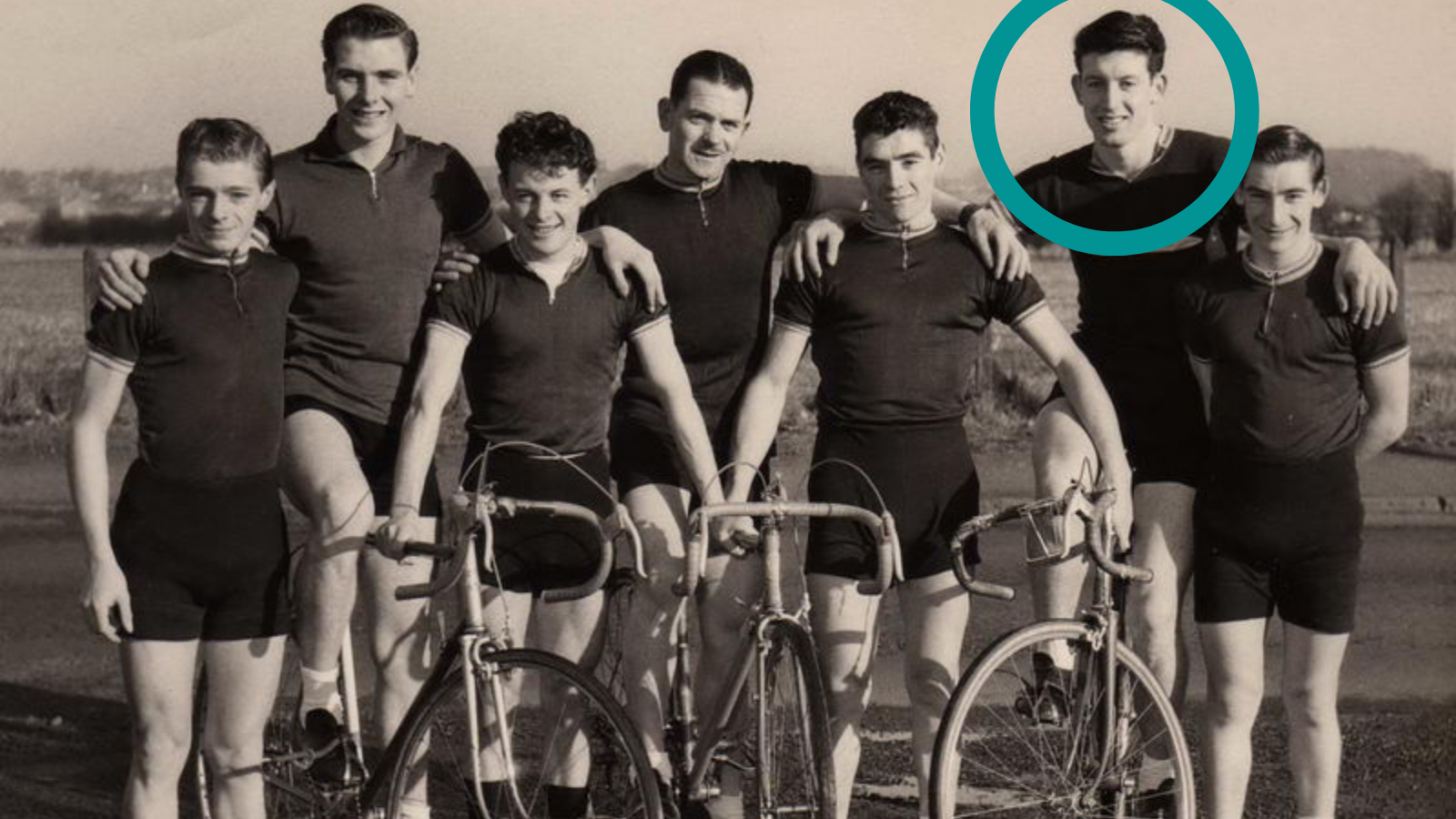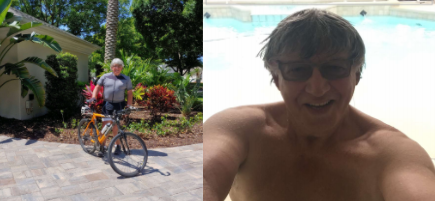A Career Story: William Gordon Dick
Our blog often profiles former students who have gone on to achieve great things, to inspire our current and future students. These case studies are normally recent graduates who have Ayrshire College fresh in their minds. However, today's case study is a very special case, as we're catching up with William Gordon Dick - who studied with us (when we were known as 'Kilmarnock Technical College') back in 1959!

Now 78-years-old, William was only too happy to share his journey with us. Starting as an apprentice pipefitter, he has had a long and interesting career since. Here are some of his highlights, in his own words.
Start Here
I was born in Tarbolton in January 1943 and attended Tarbolton JS School from 1948 through 1955, and Ayr Academy until 1958. I was a decent student by some accounts and scholastic metrics, but better at rugby, fitba, ice hockey, and pool, which got me tossed out of Ayr Academy at 15. No high-school diploma for me.
With my dad’s help, I joined Glenfield and Kennedy LTD in Kilmarnock as an apprentice pipefitter. In this capacity, I quickly realized that I should take advantage of any apprenticeship opportunities to advance my education.
I was allowed to attend Kilmarnock Technical College in technical courses that could lead to an HNC. By some miracle of grace, plus a few very caring lecturers and Glenfield engineers, I finally grabbed at this opportunity.
In or about 1963 that coincided with the completion of my apprenticeship, I graduated HNC as a Bruce Ball Prize runner-up and was deemed eligible to apply for entry into the Royal College of Science and Technology, Glasgow, as a third-year student. In five years, I had gone from pool room ‘sluff’ to college fellow. It still puzzles me. However, this I know: If I can metamorphose, anyone can. In another context, I was an ugly duckling, who became a swan.
GO ANYWHERE
At the Royal College of Science and Technology (Strathclyde University in 1965) I found my stride again and for me ‘blew through’ virtually all engineering and mathematical courses, graduating in 1965 with First Class Honors, Professor Mellanby Prize winner, and an opportunity for a full MSc scholarship to several colleges.
At that time, I was guided to Professor Bannister’s MSc course at the University of Birmingham, England, a one-year endeavor in Thermodynamics and Related Studies. A year later, voila! At that time this was the best I could dream. My mom was so proud of me she attended my graduation with several friends.
Soon thereafter, I was interviewing around the country for several engineering positions. I selected a position with the Nuclear Power Group (TNPG Ltd) at Radbroke Hall, Knutsford Cheshire, UK.
At the Nuclear Power Group, I began work as a reactor design engineer, applying fluid flow principles to several reactor designs including so-called 'Magnox', 'Advanced Gas Cooled', and 'Liquid Sodium' reactors. Additionally, I was allowed to visit and contribute to the startup and testing of various reactors either operational or under construction, including Dungeness A and Oldbury-on-Severn.
Over a two-year period as my experience and knowledge grew, I became aware of the enormous opportunities in aeronautics, space exploration, and commercial nuclear power in the United States.
USA
In 1967, I noticed an ad for nuclear engineers evidently in the US, and in a moment of curiosity, I decided to apply to see what it was all about.
I attended an interview with Westinghouse in London and was immediately recruited and offered at the time what appeared to be a salary that was two to three times my UK salary. It seemed like such an adventure and opportunity, so even though it was approaching 1968, during the Vietnam war, (“Tet Offensive”), assassinations, burning cities, riots, I accepted the offer, completed my responsibilities at TNPG, submitted my resignation and prepared to move to the US. The “brain drain” was on, and I had somehow been designated a “brain”.
I sailed to the US in July 1968 on the USS United States, arriving in New York City, July 24, 1968, flew from New York, Kennedy to Pittsburgh, and joined Westinghouse Nuclear Energy Systems Group in Monroeville PA as a design engineer in a vast division devoted to Pressurized Water Reactor Systems. In this capacity we used then state-of-the-art design, modeling, and programming methods to design, manufacture, deliver, install, and test multiple reactor systems to customers around the world, including the US, Europe, Japan, and even the UK.
An emerging and important element of these designs included integrated emergency and safeguard systems, primarily because water reactors used a high grade of uranium 235 and are more reactive and more susceptible to unstable processes under upset or emergency conditions. With Westinghouse, I worked on several reactors, including Donald C. Cooke, Wisconsin, New Hampshire Power, and Indian Point 2 on the Hudson River, about 30-40 miles north of New York City in a town called Peekskill New York. Such was the state of this industry at the time that demand for engineers was so high, I was actively recruited by Bechtel in San Francisco, and by Combustion Engineering near Hartford Connecticut.
The solicitations were so compelling, I resigned from Westinghouse after two years and accepted an engineering and construction supervisory position with Combustion Engineering, industry leaders at that time.
At Combustion Engineering (CE), I joined a construction management training group and received extensive training in advanced construction management methods. Although a leader in nuclear power, CE was also a major contributor to the fossil fuels power industry including coal, oil, natural gas.
During my tenure at CE, I worked in these power disciplines all over the country. Major facilities included Maine Yankee Nuclear Power Plant, Keystone, and Conemaugh super-critical coal-fired facilities in Pennsylvania, Beaver Valley 2 Nuclear station in western Pennsylvania, Palisades Nuclear Plant in Michigan, and Edwin I. Hatch Nuclear Station in Georgia, travelling extensively as a construction engineer, construction superintendent, and CE technical representative.
After four years of exhaustive travel and long hours in construction and plant maintenance outages, I sought and successfully secured a position with Stone & Webster Engineering Corp., in Boston, MA.
I joined Stone and Webster (S&W) as an Area Superintendent and participated extensively in the development of engineering and construction innovations and methods to expedite the construction schedules and reduce costs for competitiveness objectives.
Also, as a construction management area superintendent, provided management oversight on major nuclear projects including Millstone 3 Nuclear Power Station in Connecticut, North Anna 1 & 2 Nuclear Power Stations in Virginia, River Bend in Louisiana, Shoreham, and Nine Mile Point 2, both in New York State.
At Nine Mile 2, now a key project management participant, I disagreed with certain objectives I believed to be unrealistic and unattainable and was asked to comply or leave the project. After ten-plus years with Stone and Webster, I resigned from my position and elected to try consulting services.
CONSULTING
This was a whole new phase in my career, with much to gain, much to lose, and even much more still to learn. Based in Columbus, Ohio, now with my young family, I provided technical and management consulting services to corporations, private entities, and state agencies in engineering and management services, relating to legal matters and claims disputes. Over five years I learned firsthand that there are three key elements to consulting work:
1. Getting and keeping clients;
2. Doing the work required;
3. Getting paid.
Although highly successful, including participating in two major claims each over half a billion dollars, the work was all-consuming and draining. After a time, I reached out to return to the corporate fold, securing a position with Babcock and Wilcox in Barberton, Ohio.
At this stage of my career, I now had to deliver the goods. I was immediately assigned to a major paper mill facility in Columbus, MS, and spent several months there as a construction manager, helping to complete the project, bring it to full operations and collect the remaining final payments around $12.5 million for what was then a $130 million project.
After completing this project, I was then assigned to several other large-scale projects in Alabama, and Mississippi, flying back and forth from projects to Barberton, Ohio regularly. In 1992 I was contacted about an emerging power initiative in Owings Mills, Maryland, using waste to energy methods. The organizations were US subsidiaries of Outokumpu, Finland and Kvaerner, Norway. Because my career had taken me to many places, I joined this organization to explore the growing waste-to-energy business.
These were several projects principally located in Alberta and Nova Scotia Canada, that sought to use waste from pulp and paper mills to generate energy for serving the paper facilities so that the entire projects were essentially waste-free and generated energy enough to at least ensure the entire facility was self-contained.
I served as a project manager, planning director, and visited several construction sites for extended periods, seeking to ensure that the required quality work and cost and schedule benchmarks were being achieved. During this period, it proved advantageous to relocate to near Baltimore, MD. In due course I was recruited and offered a consulting position with the City of Baltimore. As I was growing weary with travelling tens of thousands of miles a year, I accepted.
Working through consultant organizations, including Heery International, Daniel Consultants, and Johnson Mirmiran and Thompson (JMT) I provided extensive management and consulting services to the City of Baltimore, City of Annapolis, and the State of Maryland.
These duties included data management systems development and implementation, advanced project scheduling methods, cost controls, claims prevention and resolution, personnel training and testing, contracts administration, hardly skipping a beat, or missing a day of work until I retired on September 1, 2017.

Thereafter my wife and I spent six months exploring options for places to live, from the Rocky Mountains to the Gulf Stream waters, before settling in Port Orange, Florida. For me, this was a career that began in Ayrshire, and may end there.
I am grateful for the opportunities afforded me by the wee land of William Wallace, Robert the Bruce, Sir Walter Scott, Robert Louis Stevenson, Robert Burns, James Watt, Andrew Carnegie, Alexander Graham Bell, John Logie Baird, Ian (Mighty Mouse) McLaughlan (my former school mate) … Johnny Walker (!), Sheena Easton, Lulu Kennedy Cairns, to name only a few, and so many others.
Scotland the BRAVE! FOREVER!